Exploring the Nuances of Naish Wing Boards
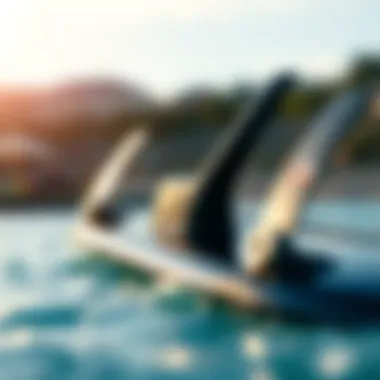
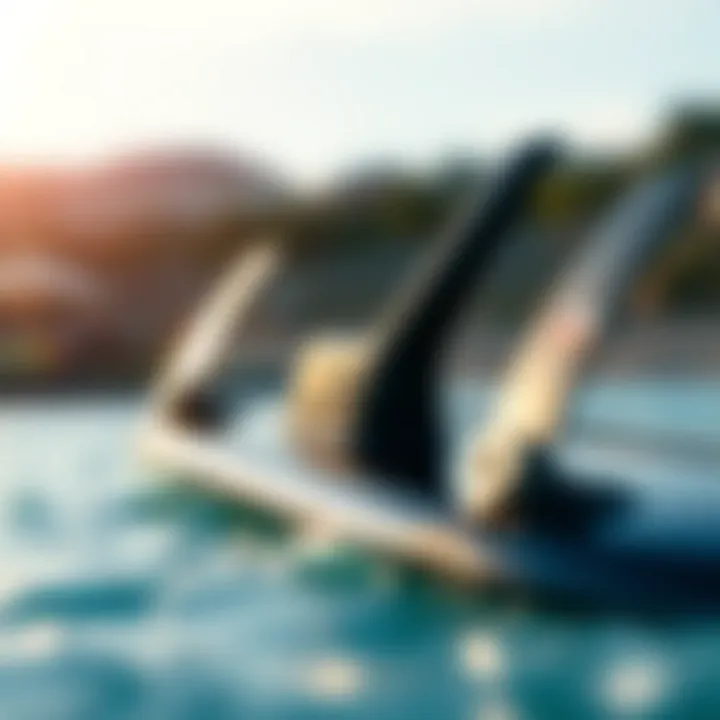
Intro
In the ever-evolving world of kiteboarding, understanding your equipment is key to elevating your experience and performance. Among the many facets of this sport, Naish wing boards stand out for their unique design and functionality. For both newcomers and seasoned riders, a deep dive into their specifics is essential. This article will explore the intricacies of Naish wing boards, shedding light on their fundamental features, performance metrics, and how they fit into the broader kiteboarding narrative.
Equipment Insights
Naish wing boards are not just boards; they are finely-tuned pieces of technology designed to enhance the rider's experience on the water. When it comes to choosing gear, focusing on what suits your style and skill level is crucial.
Latest Gear Reviews
The latest models of Naish wing boards have been receiving excellent feedback from the community. Recent reviews highlight designs such as the Naish S25.
- Performance: This board delivers superb stability, allowing riders to navigate choppy waters with ease.
- Construction: Made with a lightweight composite, it offers durability without sacrificing maneuverability.
- Comfort: Improved foot pads provide maximum grip and shock absorption, making those long sessions less taxing on the feet.
When choosing a board, pay attention to the dimensions and the volume. A larger board may offer more stability but could be cumbersome in high-wind conditions.
Essential Gear Maintenance
To keep your Naish wing board in top shape, proper maintenance is essential. Here are some straightforward tips:
- Rinse after use: Always rinse your board with fresh water to remove salt and sand.
- Check for dings: Regularly inspect your board for any scratches or dings. These can affect performance and lead to larger issues if not addressed early.
- Storage: Store your board in a cool, dry place, away from direct sunlight, to avoid damage to the materials.
Technique Exploration
Having the right gear is just half the battle; understanding how to make the best use of it is equally important.
Beginner Techniques
For those just starting with Naish wing boards, mastering the basics is crucial. Pay attention to:
- Foot positioning: Properly placing your feet can make a huge difference in stability and control.
- Balancing: Learn to find your center of balance on the board, especially when changing directions or speeds.
Practice riding in calm waters before venturing into rougher conditions; this will build your confidence and skill.
Advanced Maneuvers
Once you’ve gained confidence on the water, you may want to explore advanced techniques like transitions and jumps. A few tips to consider:
- Build speed: Before attempting jumps, ensure you are going at a speed that provides lift.
- Body position: Keep your body low and centered when you go airborne; this helps with control when landing.
Incorporating these moves takes practice, but they can dramatically enhance your kiteboarding experience.
"A good kiteboarder is not just defined by the board they ride but by their understanding of it and how they connect with the water."
As you absorb the details of Naish wing boards, remember that every ride is an opportunity to further refine your skills and connection to the sport. By being mindful of your gear and eager to learn, any kiteboarder can elevate their time on the water.
Prologue to Naish Wing Boards
Naish wing boards have carved a notable niche in the ever-evolving world of watersports. Their significance extends beyond just being a mode of transportation on water; they represent a fusion of innovation, design, and user experience. Understanding the intricacies of Naish wing boards provides valuable insight into how technology and craftsmanship come together to enhance the joy of riding.
Diving into the essence of Naish wing boards allows enthusiasts, from rookies to veterans, to appreciate the various elements that contribute to superior performance and safety on the water. The importance lies not just in knowing what makes these boards stand out, but also in recognizing how their design impacts rider experience. Key characteristics—like the materials used, their shape, and how they balance performance—can make all the difference in how effectively a user can ride.
As we explore Naish wing boards, it's important to consider their benefits, which serve to elevate the sport itself. Riders can expect improved stability and maneuverability, which are crucial for executing tricks or navigating challenging conditions. This makes it imperative for any aspiriing rider or instructor to grasp the fundamental aspects of these wing boards. Learning how designs evolve can better inform choices for beginners and even seasoned riders contemplating an upgrade.
In summary, while some might see wing boards as simply a piece of gear, they embody the spirit of adventure and personal growth that defines kiteboarding. As we delve deeper into the background of Naish and the evolution of wing boards, readers will uncover a world rich in history, technology, and excitement.
Background of Naish
The roots of Naish stretch back to the 1970s, founded by a group of passionate watersport enthusiasts led by Robby Naish himself, a revered figure in kiteboarding. The brand quickly earned respect for its commitment to quality and innovation. Naish's early designs focused primarily on windsurfing before expanding into kiteboarding and, more recently, wing surfing. This diverse expertise reflects the brand's adaptability and understanding of varied rider needs.
Over the decades, Naish has built a reputation for pushing the boundaries of what's possible on water. They prioritize research and development, ensuring their products not only meet current demands but anticipate the needs of the future. This ethos contributes significantly to their ongoing success and relevance in the competitive space of watersports.
The Evolution of Wing Boards
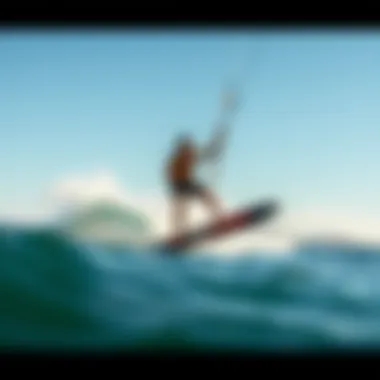
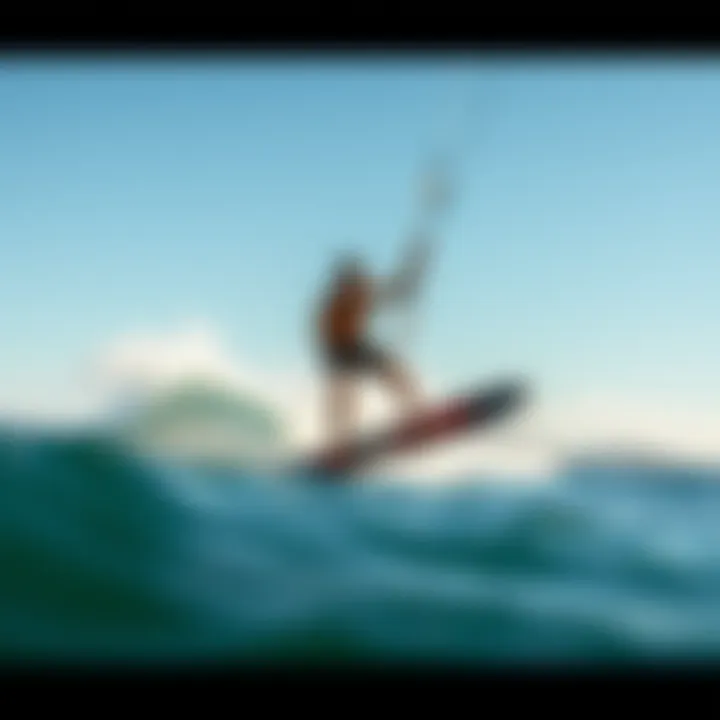
Wing boards have not always been a recognizable aspect of watersports. Originally, riders used standard surfboards or traditional kiteboards before wing technology emerged in recent years. The evolution of wing boards has been remarkably swift, driven by feedback from riders and advancements in material science.
From early designs that were often bulky and difficult to control, today's wing boards are sleek, lightweight, and highly maneuverable. Shaping techniques have improved to better harness wind energy, allowing for a smoother ride and more agile movements. Riders across all skill levels are now able to harness the wind in ways that were once thought impossible.
Recent trends show a shift towards customization. Riders can select board styles based on their skill level, preferred riding style, and unique environmental conditions. Such personalization allows individuals to optimize their experience on the water, which ultimately enhances enjoyment.
As we progress through this article, it will become evident that understanding these foundational elements will empower riders to make informed decisions, ensuring that each experience on the water is both thrilling and tailored for their personal journey.
Design Features of Naish Wing Boards
The design features of Naish wing boards are not just about aesthetics; they lay the groundwork for performance and user experience on the water. When we talk about these boards, it’s critical to explore the nitty-gritty of their construction and shape. Each detail plays a part in how the board interacts with the wind and water. Prospective buyers and seasoned riders alike must weigh these elements, as they can mean the difference between a mediocre session and a thrilling ride.
Materials and Construction
Naish wing boards showcase a meticulous selection of materials that directly affect both durability and performance. One prevalent material used in their construction is a high-grade epoxy resin. This resin not only keeps the board lightweight, ensuring faster turns and a more responsive ride, but it also contributes to its resilience against the harsh elements of the ocean. Think of it like armor for your board; it keeps you safe from the wear and tear of saltwater and sand.
The specific manufacturing process, including techniques such as vacuum bagging, allows for a sturdy yet lightweight structure. This method reduces excess resin, promoting a higher strength-to-weight ratio. Riders often find that these boards hold together beautifully, even after rigorous use.
Many Naish boards come with a double-layer rail design, which adds an extra layer of protection on the edges. This feature becomes especially beneficial for those who are learning to maneuver; the last thing anyone needs is a chipped board mid-session. Additionally, make sure to look for boards featuring a textured pad surface, which provides excellent grip. It’s these thoughtful touches that make Naish a popular choice among enthusiasts.
Shape and Performance Balance
Onto the shape of Naish wing boards – an aspect that significantly influences ride dynamics. The board’s width, length, and overall shape contribute not just to its appearance, but also to how it cuts through water, handles wind, and responds to rider input. A wider board typically offers increased stability. For example, if you’re just starting out, a board like the Naish S26 might resonate more with you due to that extra stability it provides.
However, the beauty of Naish boards is the careful balance struck between width for stability and length for speed. A longer board can glide smoother across the surface, allowing for a quicker transition between maneuvers. This shape allows for maximum planing, which is crucial for those seeking to tap into those high-speed excursions when the wind is just right.
According to rider feedback, many have noted that the rocker profile of Naish wing boards is another design element that can’t be overlooked. A slight rocker helps in achieving better maneuverability, enabling riders to carve through the water more effectively, while also minimizing the risk of nose-diving.
In summary, the design features of Naish wing boards are thoughtfully engineered, combining durable materials, innovative construction techniques, and strategic shapes to enhance performance. Riders who dive into these specifics can better understand how to optimize their experience out on the water. For those interested in pursuing a real passion for wing boarding, knowing these details can certainly give you the edge you need.
Performance Characteristics
Understanding the performance characteristics of Naish wing boards is crucial for riders seeking to improve their skills and overall experience on the water. These factors influence everything from speed to control, making it essential for both novice and advanced users to grasp the subtleties of each aspect.
Speed and Maneuverability
Speed is often at the forefront of every rider’s experience. With Naish wing boards, the design focuses heavily on enhancing velocity without compromising stability. A number of elements contribute to heightened speed: the shape of the board, its dimensions, and the materials used in construction all play a significant role.
- Board Shape: Naish wing boards, particularly those in the S26 and S27 range, are crafted with a pointed nose and a streamlined profile. This design slashes through the water, cutting down on drag. It’s like comparing a sharp knife with a dull blade. Riders will notice that the swift cut enables better gliding.
- Maneuverability: The right wing board also allows for quick turns and agile movements. Naish’s design, featuring a rounded tail, facilitates tighter maneuvering capabilities. For those familiar with kiteboarding, this is akin to being able to dart around obstacles with ease.
Riding a Naish wing board feels a bit like dancing with the wind; the smoother you are, the more fluid your movements become.
Creature comfort is key, too. With padded footstraps and ergonomic designs, riders can maintain speed while easily shifting their weight as needed. The ability to adapt quickly to changing conditions can make or break a ride, particularly in choppy waters.
Stability and Control in Water
Stability is one of those features often taken for granted, but without it, the experience can resemble trying to balance on a tightrope over a raging river. Thanks to the design principles employed by Naish, their wing boards prioritize stability across various conditions.
- Wider Base: Boards with a broader base naturally afford improved stability. Naish boards are often engineered with an emphasis on balance, allowing riders to remain steady, even in heavier winds or turbulent waters. This stability can boost confidence, enabling riders to push their limits while feeling secure.
- Fin Design: The fins on Naish boards are crafted to cut through the water effectively, providing tracking that feels almost effortless. Whether you’re riding straight or navigating through waves, the fins offer a level of control that enhances the overall experience.
- Rider Positioning: A central riding position is encouraged through thoughtful design. This allows weight distribution to be optimal, offering riders better overall feel for the board beneath their feet. When you know your board's contours and how it responds, the connection with the water feels almost telepathic.
Wind Range Optimization
A critical consideration that can’t be overstated when selecting Naish wing boards is wind range optimization. Different boards serve different wind conditions, and matching the right board to the right context can dramatically enhance your performance.
- Wings for Varying Winds: Naish offers models suited for light winds and others that excel in heavier conditions. The adaptive wings create lift with minimal effort, allowing riders to “catch” even the slightest breeze. Knowing when to use a specific wing can mean the difference between gliding smoothly or struggling against the elements.
- Adjustable Settings: Some board configurations allow for adjustment to wing positioning, which can optimize performance based on current wind conditions. Riders have the flexibility to make small tweaks, ensuring they maintain control and take advantage of the wind without feeling overpowered.
- Conditions Awareness: Finally, becoming adept at reading wind conditions will enable riders to select the optimal Naish wing board for their needs. Engaging in forums, or discussions on platforms like Reddit can deepen your understanding of how other users maximize their boards in varying conditions.
Through a deeper comprehension of these performance characteristics, riders can fully harness the unique capabilities of Naish wing boards. Making the right selections can ultimately be the key to elevating one’s riding proficiency and enjoyment.
Comparing Different Naish Wing Models
In the realm of wing boarding, choosing the right equipment can be the difference between a thrilling ride and a frustrating experience. The Naish brand offers a variety of wing models, each tailored to different riding styles and conditions. Understanding these distinctions can help riders make informed decisions that align with their skills and preferences. This section focuses on comparing the Naish S26 and S27 wing ranges, examining their unique features and performance characteristics.
Naish S26 Wing Range
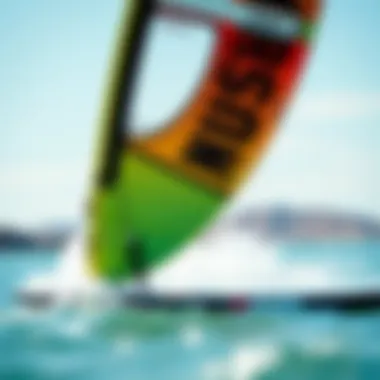
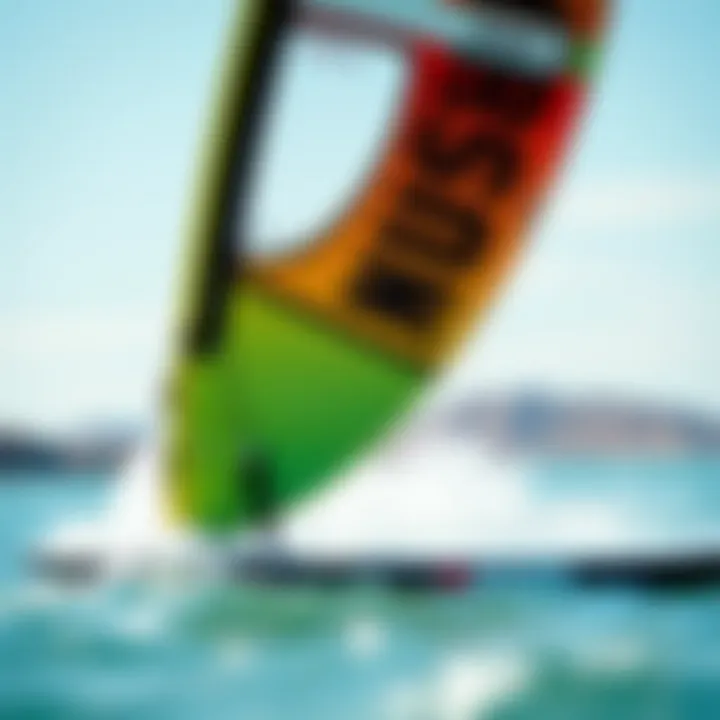
The Naish S26 wing range serves as a great starting point for many riders. With its user-friendly design, it appeals especially to novices and those looking to refine their skills. The wings in this range come in varied sizes, allowing for flexible use in different wind conditions.
One notable feature is the wing’s balanced profile, which fosters stability while riding. The S26 also incorporates lightweight materials, which can enhance performance without compromising durability. Importantly, users have reported that the S26 provides a solid lift, facilitating easy take-offs even in light winds, making it versatile for different riders.
- Performance: Well-rounded performance makes it suitable for a variety of conditions.
- Weight: Light yet robust, the S26 is designed for comfort and reliability.
- Ease of Use: Particularly friendly for beginners, easing the learning curve.
"The S26 got me hooked. I was up on the board faster than I imagined!"
— Anonymous Rider
Naish S27 Wing Range
Transitioning to the Naish S27 wing range reveals a more advanced and performance-oriented option. This model is engineered with high-level riders in mind, offering enhanced maneuverability and speed capabilities. The S27 features a more refined design that emphasizes performance in challenging conditions, making it a go-to choice for experienced users.
The S27 phoenixes from its predecessor through upgraded materials that not only lighten the wing but also enhance its aerodynamic efficiency. With a refined outline and improved leading edge, it reduces drag significantly, which translates into greater speed and agility when cutting through the water.
- Advanced Design: Improved features cater to seasoned riders seeking performance.
- Speed and Agility: Faster in response, making it suitable for more competitive conditions.
- Versatility: Adapts well to various riding styles, from racing to freestyle.
In weighing these models, the choice comes down to your skill level and riding objectives. While the S26 encourages progression, the S27 addresses the demands of experienced riders aiming for competitive edges. Both lines hold significant advantages, highlighting Naish's commitment to catering to the diverse needs of the kiteboarding community.
Technical Specifications
Understanding the technical specifications of Naish wing boards is fundamental for both novice and seasoned riders. These details not only inform the buyer about compatibility with their skill level and riding style but also enhance safety and performance on the water. Proper specifications can greatly influence the rider's experience, flushing out any myths about wing boards being one-size-fits-all. Having a grasp on dimensions, weight, and materials is essential. They dictate how a board will respond under various conditions, thus optimizing the overall experience.
Board Sizes and Dimensions
When it comes to choosing a Naish wing board, one can’t overlook the significance of board sizes and dimensions. The size of a board directly affects its performance characteristics such as speed, stability, and maneuverability.
- Length: The length of the board affects how it cuts through the water. Longer boards typically provide more stability and can glide better in lighter winds.
- Width: A wider board often means a larger surface area, which enhances buoyancy and support for beginners or heavier riders. However, it may impact speed and agility for more experienced users.
- Thickness: Thicker boards generally offer better floatation and are easier to ride, especially in choppy water.
Choosing the right size depends on various factors including the rider's weight, skill level, and the conditions expected. It's worth noting that Naish offers a range of sizes catering to different rider preferences. Whether one is new to the sport or an advanced rider focusing on freestyle tricks, understanding these dimensions is crucial for matching a board to personal riding styles.
Weight Capacity Considerations
Another critical aspect when assessing Naish wing boards is weight capacity. Each board has a maximum weight limit that can significantly affect its performance.
- Rider Weight: Heavier riders typically require larger boards to prevent poor performance in floating and maneuverability. Each board’s weight capacity is carefully calculated to ensure optimal performance.
- Gear Load: Don’t forget the added weight from gear and equipment. Those heading out for a full day on the water should take into account what they’ll be bringing along, including life vests, paddle equipment, and other personal items.
Getting a board that aligns with one's total weight ensures not just performance but also safety. A board that's too small can lead to unwanted submersion or unstable rides, while oversized boards may hinder agility.
With adequate knowledge of dimensions and weight capacity, riders can select the right Naish wing board tailored to their unique requirements, ensuring a prime riding experience, whether cutting through glassy waters or tethering waves. Emphasizing this knowledge strengthens the community of wing board enthusiasts, as informed choices promote both enjoyment and safety.
User Experience and Community Feedback
The connection between users and their equipment holds significant weight in the overall enjoyment and effectiveness of wing foiling. Understanding how riders perceive Naish wing boards provides valuable insights for both potential buyers and manufacturers themselves. This discussion hinges on the anecdotal experiences shared by individuals navigating the waters with these boards. Gathering this feedback is crucial, as it shapes the evolving landscape of wing boarding. Riders can affirm what works and what doesn’t, and this feedback extends beyond mere opinion, offering factual data points for the makers.
User experience serves as a practical barometer reflected in reviews, which influence purchasing decisions and give industry insight into rider needs and preferences. Moreover, as the kiteboarding community continues to grow, the need for reliable information exchange intensifies. When someone shares their ride impressions or critiques a design feature, it not only aids in forming relationships among users, but it also pushes brands like Naish to innovate further.
Reviews from Novice Riders
For novice riders, the experience of using a Naish wing board can be a double-edged sword. Many beginners are particularly finding these boards user-friendly, allowing a smoother entry into the sport. They report that the stability offered by these boards helps them get a handle on their balance in a way that feels manageable. A novice rider named Mark, who recently transitioned from traditional kiteboarding, noted:
"The Naish wing board feels sturdy beneath me. I'm not fighting to stay upright all the time, which lets me focus more on mastering the wings rather than worrying about falling."
This sentiment is echoed by numerous beginner riders who appreciate the ease of usability and lightweight designs that Naish has introduced.
Common threads among reviews emphasize the adaptability of these boards across different conditions, which can be a strong motivator for those new to the sport. The wing's versatility helps riders experiment without feeling limited by their equipment. Nevertheless, some entry-level users also voiced concerns about the steep learning curve associated with wing manipulation and steering. It's essential for newcomers to understand that while the board provides stability, proficiency with wing techniques can shed light on challenges.
Insights from Experienced Users
In stark contrast, experienced users often provide a more nuanced view on how Naish wing boards stand their ground in demanding conditions. Riders with years under their belt highlight the boards' performance attributes in rougher waters and higher winds. Their reviews tend to focus on elements like maneuverability, speed, and responsiveness.
Sophia, an avid rider for several years, shared, "I love how my Naish board reacts to my movements. When I need to turn sharp or catch a gust, it responds exactly as I expect. It's like an extension of myself on the water."
Feedback from seasoned users generally points to:
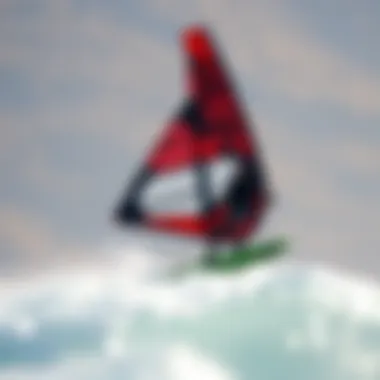
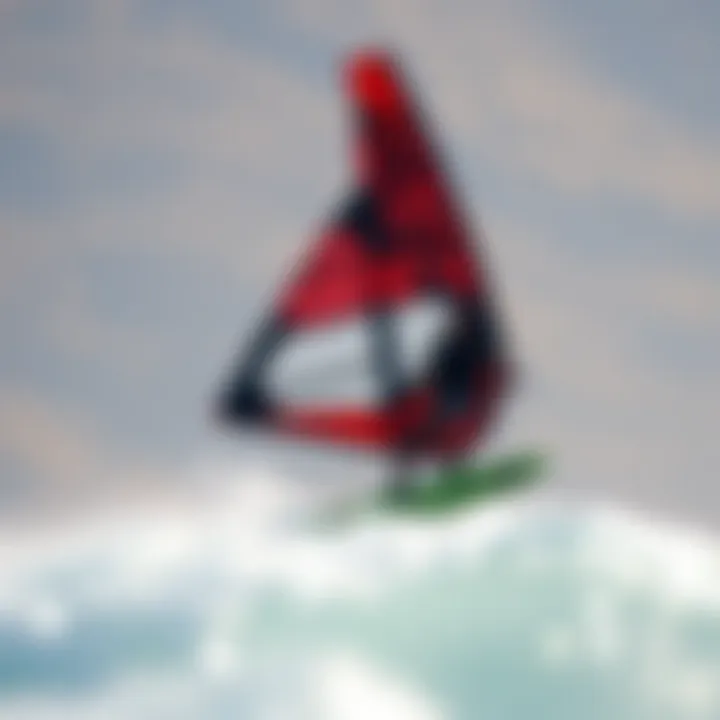
- Durability: Many riders commend the craftsmanship, stating that the boards endure the tumult of harsh environments effectively.
- Performance Under Pressure: When the winds pick up, experienced riders feel confident in the Naish boards, stating that they handle accelerated speeds remarkably well.
- Advanced Features: Some users mentioned specific features, such as foot strap placements and fin configurations, that enhance their riding experience.
However, even experienced users do not shy away from constructive criticism. A few noted that certain models could benefit from lighter materials to further enhance performance without sacrificing stability. Feedback like this highlights a collaborative spirit within the community, as both novices and experts work towards improving the experience for all.
Ultimately, user experiences and extensive feedback from the community serve to build a tapestry of knowledge surrounding Naish wing boards, lending insights that help inform potential users. Community-driven discussions on platforms such as reddit.com or facebook.com contribute to a robust dialogue that feeds into product development. This synergy underscores the importance of rider voice and experience in shaping future innovations.
Maintenance and Care for Naish Wing Boards
Taking care of your Naish wing board is essential, not just for its longevity but also for ensuring optimal performance on the water. With the right maintenance practices, users can prevent common wear and tear, avoid costly repairs, and enhance their overall riding experience. Neglecting proper care can lead to issues that diminish the board's responsiveness and speed. A well-maintained board also reflects a rider's commitment to the sport, fostering a deeper connection to both equipment and environment.
Cleaning Guidelines
Keeping your Naish wing board clean is crucial, particularly after rigorous sessions in the ocean or a lake. Salt, sand, and debris can accumulate and lead to scratches or even long-term damage if not addressed. Here are some steps to maintain that sparkle and performance level:
- After each ride, rinse your board with fresh water to remove salt and sand.
- Use a soft sponge or cloth to gently scrub the surface. Avoid abrasive materials that might scratch the finish.
- Pay special attention to the footstraps and fins; grime can build up in these areas, impeding both functionality and cleanliness.
- If stubborn stains exist, consider a mild detergent that’s safe for marine use, but make sure to rinse thoroughly afterward.
Regularly cleaning your board not only preserves its aesthetics but also maintains its performance characteristics. A clean board can glide efficiently, allowing riders to maximize their time on the water.
Storage Recommendations
Proper storage of your Naish wing board can make a world of difference in its lifespan. Elements like UV light, extreme temperatures, and humidity can wreak havoc on your equipment. Here’s how to store your board effectively:
- Always store the board in a cool, dry place away from direct sunlight. A temperature-controlled garage or storage unit is ideal.
- Consider using a padded bag for added protection, as this can help prevent dings and scratches during transport or storage.
- When stacking multiple boards, ensure they’re not on top of each other directly; use a soft surface or a dedicated rack instead.
- It’s advisable to remove footstraps and fins to lessen stress on the board during storage.
By adhering to these storage recommendations, you not only safeguard your board but also ensure it's ready for action whenever you are.
"Proper care and maintenance of your Naish wing board is not merely a task; it’s a ritual that deepens your bond with the sport and equipment."
For further resources on kiteboarding maintenance, you might consider checking out useful sites such as Wikipedia, or forums on Reddit that offer community insights. By elevating your understanding of maintenance, you can fully enjoy all the thrills that come with riding a Naish wing board.
Future Innovations in Wing Boarding
As the world of water sports continues to evolve, future innovations in wing boarding hold significant potential to reshape how enthusiasts engage with the sport. Growing interest in wing boards like those from Naish reflects a broader trend of integration between design and technology. Understanding these innovations is crucial as they offer not only enhancements in performance but also broaden the accessibility of wing boarding to a wider audience.
Emerging Trends in Design
One noticeable design trend is the shift towards lighter materials that still provide durability. Companies are experimenting with advanced composites that reduce weight without sacrificing strength. This means riders can achieve better performance with less effort, both in terms of speed and maneuverability.
- Aero-Optimized Shapes: Shapes that improve aerodynamics are becoming more common. The outlines of boards are being refined to minimize drag, allowing for a quicker take-off and smoother rides.
- Adaptive Boards: Innovations such as adjustable wings or modular designs provide versatility. Riders can adapt their equipment based on conditions or personal preferences, enhancing their overall experience.
- Eco-Friendly Materials: Sustainable materials are appearing in various products, including Naish wing boards. As the importance of eco-awareness grows, enthusiasts are seeking gear that supports environmental responsibility. This shift not only reflects consumer values but can contribute to a healthier planet.
The blending of traditional craftsmanship with modern technology exhibits a promising future for wing boarding, paving the way for advancements that prioritize rider experience.
Technological Advancements
Alongside design modifications, technological advancements play a pivotal role in enhancing the wing boarding experience. Manufacturers are finding ways to integrate technology into their products, leading to smarter and more intuitive boards.
- Smart Sensors: Some boards are now equipped with sensors that provide real-time feedback on performance metrics. This feature could help riders understand their speed, lift, and stability while on the water. Consequently, this data can assist in refining techniques and improving overall performance.
- Enhanced Grip and Control Systems: Innovative grip designs ensure better control and stability, particularly in choppy waters. Riders who feel secure are likely to challenge themselves more, pushing their limits.
- Wearable Technology Integration: As wearable tech grows in popularity, the potential for integrating monitoring devices directly into gear will encourage deeper performance analysis.
As these trends develop, the landscape of wing boarding will continue to evolve, ensuring that both novice and experienced riders can expect significant enhancements to their sessions.
In summary, keeping an eye on future innovations in wing boarding is essential for anyone within this vibrant community. Whether it’s the shift towards sustainable practices, smart technologies, or design evolution, these elements collectively promise to enhance the allure of wing boarding, making it a sport for the modern age.
For further reading on related trends in sports technology, check out Wikipedia on Emerging Technologies.
Ending and Recommendations
In wrapping up this exploration of Naish wing boards, it's important to emphasize the role that informed decisions play in the lives of kiteboarders, instructors, and enthusiasts alike. This article has delved into the intricate world of Naish wing boards, and understanding the nuances of these boards provides various benefits to riders of all levels. Whether you’re an aspiring novice or an experienced pro, knowing your equipment is a vital part of enhancing your overall experience on the water.
Summarizing Key Takeaways
- Quality Design and Construction: The commitment Naish puts into the materials and construction of their wing boards ensures durability and top-notch performance. From the board’s shape to its balance, every aspect is crafted for optimal rider experience.
- Performance Characteristics: Riders can expect impressive speed, maneuverability, and stability, which are essential for tackling diverse wind conditions. Mastering these boards means relying on their design elements that cater to performance.
- User Experiences Shape Designs: Feedback from both novice and experienced users has illustrated how community insights influence Naish's board design. Their commitment to listening to the rider's voice leads to innovation and improvements in future models.
- Maintenance is Key: A well-maintained board leads to better performance. Simple practices in cleaning and storing can greatly improve the longevity and responsiveness of your Naish wing board.
- Future Trends: As technology advances, staying informed about emerging trends in wing boarding can help enthusiasts make wise choices about upgrades and new technologies that promise to enhance their experience.
Choosing the Right Naish Wing Board
Selecting the appropriate Naish wing board is essential for aligning your riding style with the board’s capabilities. Consider the following factors when making your choice:
- Skill Level: Beginners may benefit from models designed for stability and ease of use, whereas seasoned riders often prefer boards that offer more dynamic features.
- Riding Style: Identify if you prefer freeride, freestyle, or wave riding as different models cater specifically to these styles.
- Conditions: Your local wind conditions will also dictate your choice, as some boards are optimized for lighter winds while others excel in stronger gusts.
- Personal Preferences: Don’t overlook your own comfort. The feel of the board underfoot can significantly influence your confidence and enjoyment on the water.
Ultimately, doing some research, seeking advice, and considering your personal preferences will yield the best decision when choosing a Naish wing board. Each selection carries the promise of adventure, making your kiteboarding experiences not only thrilling but also fulfilling. For more information on user reviews and feedback, forums like Reddit.com and Facebook can provide a treasure trove of information, while sites like Britannica can offer additional insights into the sport itself.







